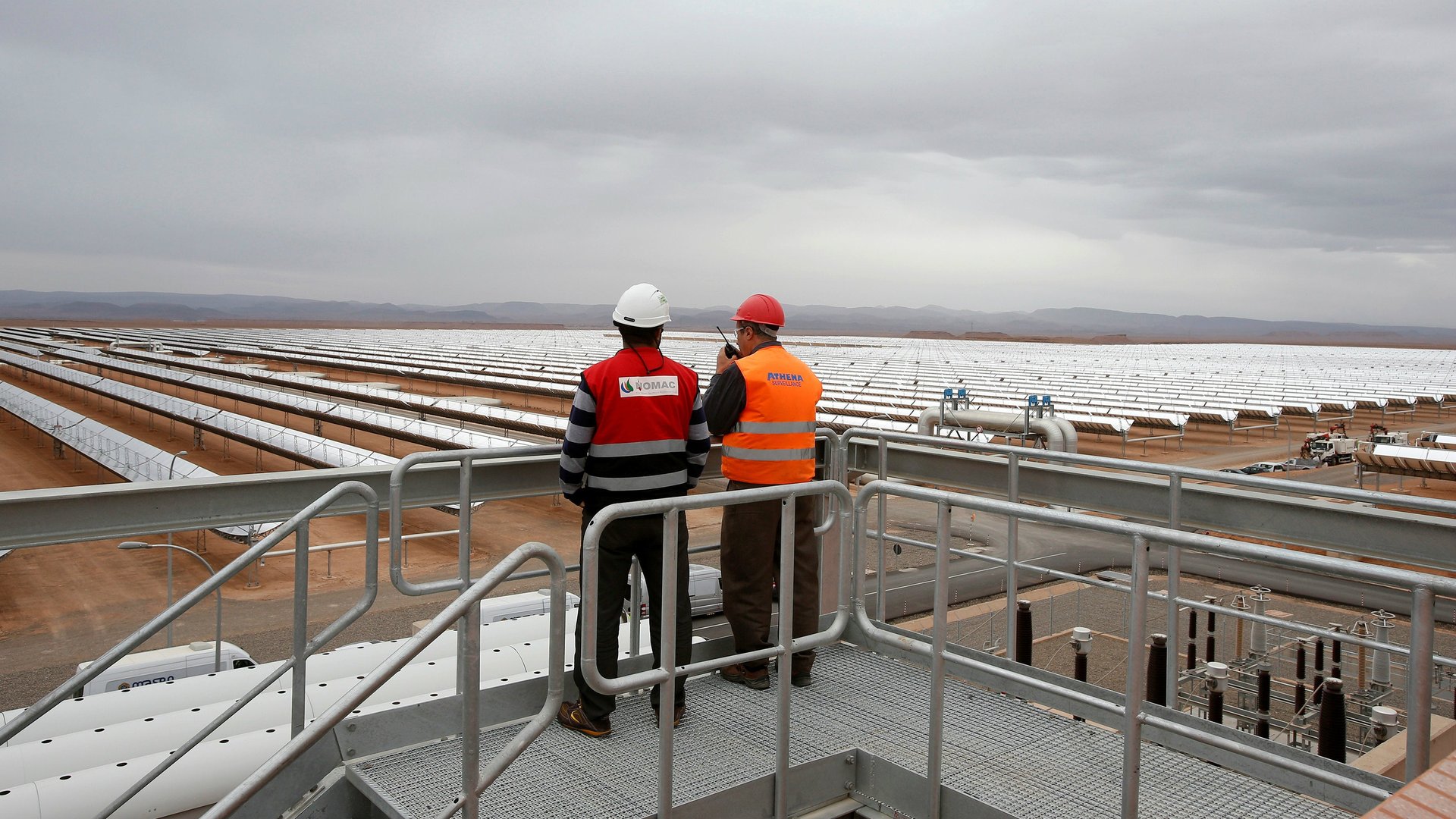The biggest obstacle to deploying solar energy in Africa is skepticism in high places
Solar power is often touted as the obvious solution for the 600 million Africans who live without electricity.


Solar power is often touted as the obvious solution for the 600 million Africans who live without electricity.
But some of the biggest solar power-focused businesses on the continent say some bumps remain on the way to large-scale deployment of solar power either as an alternative to or complement of existing national power grids.
One obstacle is simply “believing that it is feasible,” Mustapha Bakkoury, chairman of the board of Morocco’s Solar Energy Agency, said at a panel during the Africa CEO Forum last week in Abidjan. Even though there are “enough examples to show it works,” as Bakkoury said, a measure of skepticism is still holding back full-blown government participation in some countries. That’s reflected in “not having commitment at the highest levels” to create policy to push renewable energy, he said. Charlotte Aubin, president of GreenWish Partners, an investment firm that specializes in renewable energy solutions shared similar sentiments saying more countries need “strong commitment” to integrating renewable energy solutions.
While Africa’s power generating capacity has slowly improved over the years, rationing, rolling shortages, and blackouts continue to hamper many countries development—including economic giants like South Africa and Nigeria. These power cuts stunt economic growth, hindering small and large businesses alike as well as schools and hospitals.
Limited financing also encumbers power generation: estimates of annual investments required for the power sector between 2015 and 2040 range from $33 billion to $63 billion. Yet the average annual spending in the past decade in the African power sector has been about US$12 billion. As a result, the low access, poor reliability and high prices of electricity cost African economies an average of 2.1% of their GDP, according to the World Bank.
But there has been an increased focus on renewable energy in many countries, particularly as governments, multilateral agencies and investors alike, realize that building traditional power grids may not be the most cost-efficient way to meet the needs of the continent’s fast growing populations. Solar has been especially focused on in north Africa, with Egypt, Tunisia and Morocco leading the way.
Morocco is a model of what’s possible as the government is pushing for renewable energy to generate 52% of its electricity by 2030. It is also backing that rhetoric with action partly through the construction of Noor Ouarzazate, a solar plant expected to become the world’s largest when completed.
There’s a need for a broader energy mix in many more countries as “it’s not very clear” enough people are thinking deeply in that direction despite public rhetoric, said Thierry Déau, chief executive at Meridiam, an investment firm that financed the largest solar power plant in West Africa. He said solar power projects are often also hampered by existing infrastructure problems such as the lack of grids: “We start by building the solar station and then find out that we have to connect it.”
As national governments work through setting up and implementing large-scale renewable energy plans, companies offering pay-as-you-go solar solutions are seeing success on the continent. By eliminating the large one-time expense of purchasing and installing solar power systems, these companies allow customers pay for both equipment and service in installments—a more feasible proposition across many African countries. That strategy is continuing to win conviction from investors: in January, two pay-as-you-go solar firms in Africa received $75 million in financing.